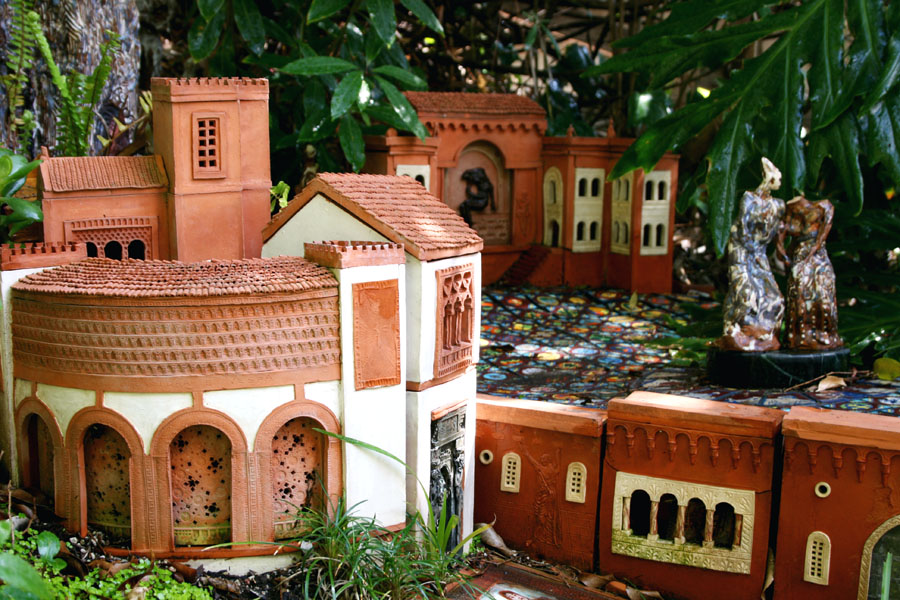To the left is the semi-circular building, the MAUSOLEUM OF THE WASP AND HOURGLASS. In Ventiçello, an hourglass refers to a black widow because of the red emblem on the spider's belly. The wasp and the black widow who fought here are immortalized in two panels on each squat tower. One of the more unusual design elements of the clay village is it's pierced walls. Notice how the inner wall is riddled with holes. This allows the interior to air out while giving the walls an embossed design that deepens with the time of day. The idea of the arrangement derives from fabric. The Balinese of Indonesia have a special woven cloth with magical designs called Geringsing. It represents the stars. I losely took that concept and applied it to Ventiçello windows and doors. At night, with a candle burning in the room behind the lacy clay wall, it shines like orange stars in the sky.


